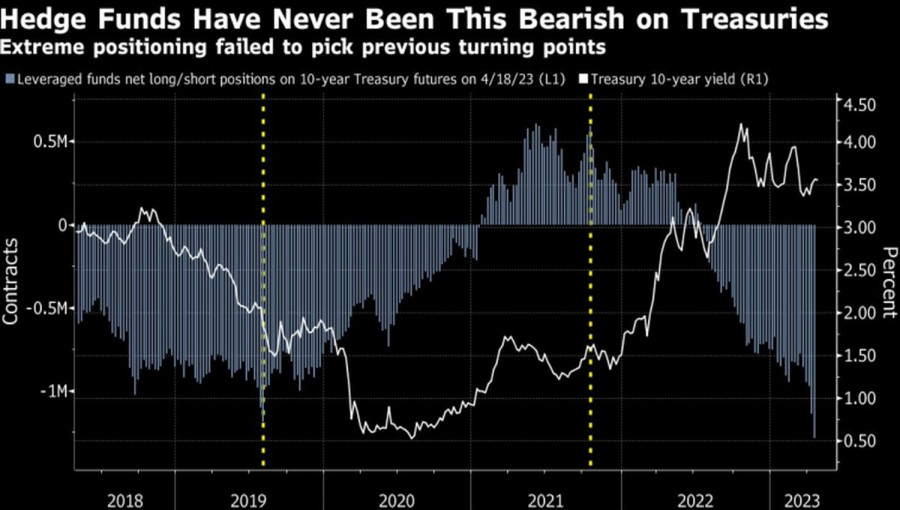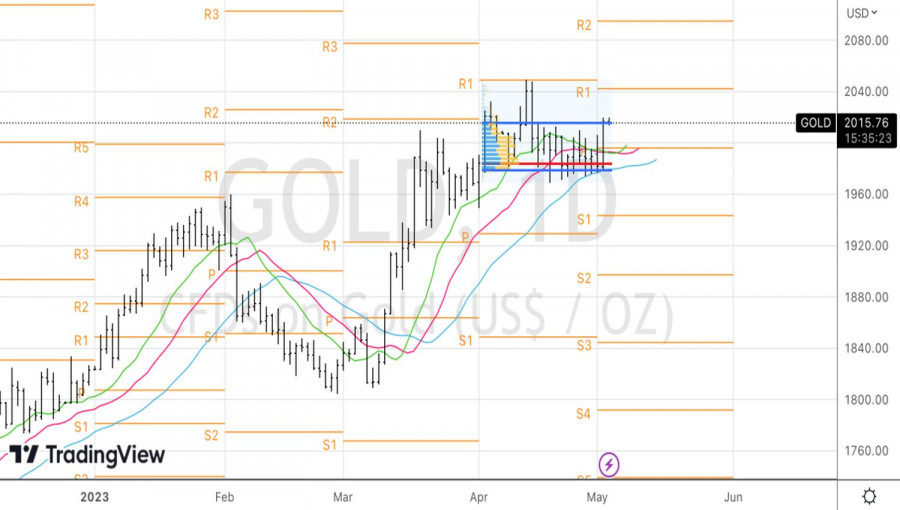
Which will save you from recession faster: gold or the U.S. dollar? Despite the fact that during all but one of the recessions over the past 40 years, the U.S. currency has strengthened, the next one may be an exception. It is not for nothing that central banks do not get tired of increasing their reserves of precious metals. It's no coincidence that the release of a new batch of gloomy U.S. labor market data caused Treasury bond yields to collapse and XAUUSD quotes to rise above 2000.
U.S. recessions and the U.S. dollar

According to the World Gold Council, the Bank of Singapore bought 17.3 tons of gold in March. As a result, it acquired 68.7 tons in the first quarter, increasing its reserves to 222.5 tons, which is 45% more than at the end of December. China has been increasing its reserves for the fifth consecutive month. They currently stand at 2068 tons. Central banks understand that precious metals may be needed during a crisis. For example, Turkey, one of the largest buyers in 2022, began selling gold to support the lira exchange rate.
Gold is definitely winning the battle against the dollar for the title of the main safe-haven asset. It is highly doubtful that history will repeat itself and the USD index will strengthen in response to a recession. Previous downturns usually had a global character. Now, GDP contraction threatens the United States exclusively, so why run to the U.S. dollar?
The worse the U.S. macroeconomic data comes out, the more reasons there are to go long on XAUUSD. A striking example is the market reaction to the decline in U.S. labor market vacancies to their lowest levels in nearly two years and the increase in the number of layoffs to 1.8 million in March. Treasury bond yields plummeted, and the dollar weakened. This allowed gold to return above $2000 per ounce.
The move was fast, which is associated with hedge funds closing excessively inflated net shorts on U.S. debt obligations. They are also used as a safe-haven asset, so increased fears of an approaching recession lead to higher bond prices and lower rates on them.
Dynamics of speculative positions and bond yields

I don't think the Fed will make any serious changes in the precious metals market. It is in the interest of the central bank to cool the economy. Inflation remains worryingly high, so the United States would not be hurt by a short and shallow recession to reduce domestic demand and bring prices down towards the 2% target.

An increase in the federal funds rate by 25 basis points to 5.25% is expected, and its maintenance at this level, at least until autumn. Subsequently, worsening U.S. macroeconomic statistics will intensify rumors of the Fed's "dovish" reversal and create headwinds for the U.S. dollar and tailwinds for gold.
Technically, on the daily chart, after unsuccessful attempts to storm the lower boundary of the fair value range of $1980–$2015 per ounce, the quotes returned to the upper boundary. As a result, a False Breakout pattern formed. Consolidation of gold above $2015 will allow the "bulls" to develop an attack. In this case, it makes sense to buy the asset towards $2045 and $2075.